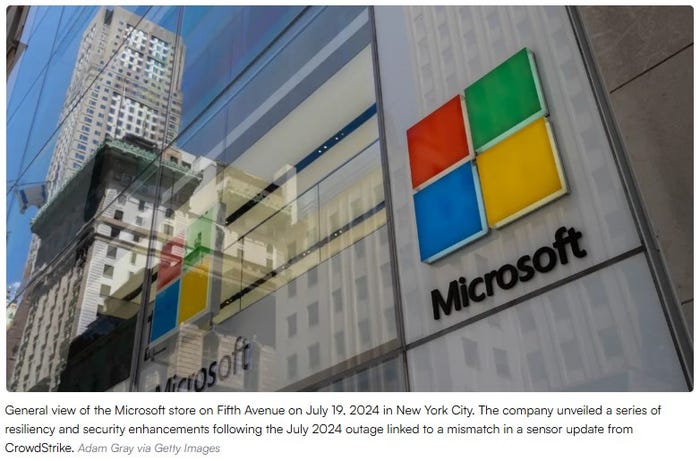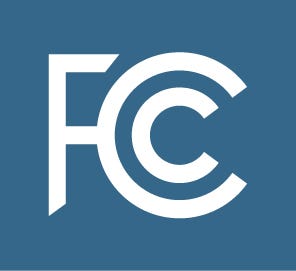Spreading the wealth
By definition, a multiple access technique enables two or more users to simultaneously share some finite piece of radio spectrum. In this article, we
June 30, 2006
By definition, a multiple access technique enables two or more users to simultaneously share some finite piece of radio spectrum. In this article, we will first examine the three most common multiple access techniques:
frequency division multiple access (FDMA)
time division multiple access (TDMA)
code division multiple access (CDMA)
Then we will look at multiple access on wireless computer networks, most of which use an entirely different technique called carrier sense multiple access (CSMA).
Let’s start with a finite portion of radio spectrum and some number of users who need to communicate. Perhaps the simplest way to satisfy this need is to create a single channel from the spectrum, and let the users talk one at a time. If the same channel (frequency) is used for transmitting and receiving, we have created a simplex radio channel. If we want to extend the range of communication, we may install a repeater on a mountaintop and use one radio channel for downlink (i.e., forward link, talk out) and a second radio channel for uplink (i.e., reverse link, talk back, talk in).
A couple of new terms are needed: If the uplink and downlink share the same radio channel, as our simplex channel does, we say the system employs time division duplexing (TDD). If the uplink and downlink use separate radio channels, as in our mountaintop repeater example, we say the system employs frequency division duplexing (FDD). Note that the term duplexing in this context means the coupling of uplink and downlink, not sharing one antenna between transmitter and receiver.
At this point, users can only talk one at a time. To enable two or more simultaneous conversations, we must employ a multiple access technique. Virtually all land mobile radio voice networks use one of three basic techniques: FDMA, TDMA and CDMA.
The earliest multiple access technique adopted was FDMA. With FDMA, each simultaneous user is assigned its own non-overlapping radio channel for the duration of the call. The original cellular phone airlink standard, called the advanced mobile phone system (AMPS), employed FDMA with 416 channels on the uplink and 416 channels on the downlink, with each channel 30 kHz wide. Phase I of Project 25 also is FDMA-based, using 12.5 kHz or 6.25 kHz channels.
In the early 1990s, the U.S. cellular radio industry was growing rapidly and a committee was formed to develop a new airlink standard for greater voice capacity. The new standard, now called TIA-136, is the first U.S. digital cellular standard and it uses TDMA. Unlike FDMA, multiple TDMA users share the same radio channel, but now the channel is partitioned into frames and time slots, with each user assigned one or more time slots per frame. With TIA-136, there are six time slots per 20-millisecond frame, and each voice user is assigned two slots per frame (see Figure 1). Each channel is still 30 kHz wide, but now the channel carries up to three digital users rather than one analog user. Because there are other simultaneous users on other radio channels, TIA-136 is really a combination of FDMA and TDMA.
The Europeans had similar capacity problems, and they followed an ambitious international approach to the problem. The result was the global system for mobile communications, better known as GSM. GSM also is TDMA-based, but the channel bandwidth is 200 kHz, and up to eight simultaneous users share each radio channel. GSM is the most widely used airlink standard in the world, with more than 1 billion users.
Phase II of Project 25 most likely will be a TDMA-based system, and some of the leading public-safety radio vendors already offer TDMA trunked radio systems.
CDMA is a spread spectrum multiple access technique. By definition, a spread spectrum signal occupies bandwidth in excess of the minimum required to send the desired information. Spreading is accomplished by means of a code signal that is independent of the data. The desired signal is de-spread at the receiver using the same unique spreading code, and the original data signal is recovered.
There are two basic spread spectrum techniques: direct sequence and frequency hopping. Although frequency hopping is used by the military for its superior anti-jamming capabilities, direct sequence spread spectrum was adopted by the cellular industry.
A block diagram of a direct sequence spread spectrum system is shown in Figure 2. Note that undesired signals at the receiver that do not use the same spreading code are not de-spread by the receiver. In fact, interferers are actually spread over the bandwidth of the code signal, and the spread spectrum system sees this interference as relatively benign white noise.
In a CDMA system, each of N users is given a unique code: gi(t), i = 1, 2, …, N. The user codes are orthogonal or nearly orthogonal, so the cross-correlation of two different codes is near zero. As we load the system with more users, the interference level increases, and eventually the bit-error rate becomes unacceptable. A rough approximation of the number of users, Nt, that can be served by a CDMA system is given by Equation 1 on page 42. Applying Equation 1, we see that a CDMA system operating at R = 9.6 kb/s, with a spread bandwidth of Ws = 1.25 MHz, and a required Eb/N0 of 5 (7 dB) could theoretically support 26 users.
Because users are moving relative to the repeater (cell) site, received power levels will vary, and users close to the cell site effectively will jam users distant from the cell site. For this reason, accurate power control is essential with CDMA. Equation 1 assumes perfect power control. In practice, power control errors, unequal cell loading, interference from the pilot signal, regulatory bandwidth limitations and other impairments will degrade capacity.
The version of CDMA adopted by the U.S. cellular industry for second-generation systems is described in TIA-95 (800 MHz) and Joint Standard 008 (PCS band). It uses a 1.25 MHz-wide channel, a chip rate of 1.2288 Mc/s and a nominal user bit rate of 9.6 kb/s.
The acceptance of CDMA by cellular phone operators was not universal, at least not at first. A standards war ensued for several years, with some operators choosing TDMA and some choosing CDMA for second-generation (digital) cellular systems. Eventually, standards for third-generation cellular were adopted and nearly all fielded 3G standards are CDMA. But there are two versions: Wideband-CDMA (W-CDMA) is the version adopted by GSM operators, and this standard has built-in features making it backward compatible with GSM.
The second version of third-generation CDMA, cdma2000, is backward-compatible with TIA-95. Both versions are “wideband” CDMA in the sense that they employ channel widths of 1.25 MHz and higher.
Note that each of the FDMA, TDMA and CDMA examples presented thus far are FDD-based systems.
The predominant wireless data standard is IEEE 802.11, the wireless Ethernet protocol. All 802.11 systems use carrier sense multiple access with collision avoidance (CSMA/CA). With this technique, each station listens to the channel for a period of time to determine whether another station is transmitting. When another station is transmitting on the same channel, the station wishing to transmit will wait for a random length of time before checking the channel again. If the channel is clear, the station will proceed to transmit. The transmitting station will reserve the channel for a specified period of time to minimize the risk of collision. If a collision occurs, each station will back off for a random period of time before attempting another transmission. Because radios transmit and receive on the same radio channel, 802.11 is a TDD-based system.
However, the line between wireless voice and data has become blurred. A modern packet data system also can carry voice communications, most notably using voice over IP.
Jay Jacobsmeyer is president of Pericle Communications Co., a consulting engineering firm located in Colorado Springs, Colo. He holds bachelor’s and master’s degrees in Electrical Engineering from Virginia Tech and Cornell University, respectively, and has more than 20 years experience as a radio frequency engineer.
References:
K.S. Gilhousen, et al., “On the capacity of a cellular CDMA system,” IEEE Transactions on Vehicular Technology, May 1991.
Author’s Note: In the March issue, I categorized the Project 25 12.5 kHz FDMA standard as “Phase I” and the 6.25 kHz FDMA standard as “Phase II.” Although many in the industry follow this same categorization (probably due to the way the systems are being fielded), in reality, the P25 standards committee considers both of these FDMA systems Phase I. Phase II, which will most likely be TDMA-based, is still in committee at the time of this writing.
Equation 1
Nt ≅ Ws / R(Eb / N0)req
where Ws is the spread bandwidth, R is the data rate and (Eb/N0) req is the required ratio of energy per bit to noise power spectral density, to achieve some desired level of performance [1].



